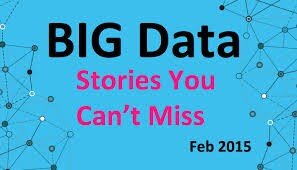Need to convince someone? Bring Data (and a good story)
As Daniel Pink suggests “to sell is human”. Even if we do not have a formal ‘selling’ role we are always looking to ‘sell’ someone on our point of view, our recommendations, our need for their help etc.. As data analysts we live and breathe data every day, whether we are looking to develop some new insights, prove a case or simply explore possibilities. In the end we are doing it to influence someone or some group. In these days of ‘evidence based decision-making’ I am wary that one person’s ‘evidence’ is another person’s ‘garbage’. You don’t have to look much further than climate change sceptics to appreciate that. I was therefore intrigued when I came across Shawn Callahan’s recent blog post on “The role of stories in data storytelling”. Shawn talks about the use of ‘story’ before, during and after data analysis.
Before data analysis stories
Before data analysis is about understanding the dominant ‘story’ before your analysis. For us a good example of this is our recent work on comparing relationship analytics with activity analytics. The dominant storyline was (and probably still is) that social analytics used in the consumer world i.e. activity measures, are sufficient for use inside the enterprise.
During data analysis stories
The ‘during the data analysis’ story is about how stories evolve from your act of data analysis. Our story in the interactions vs activity debate was about one of our clients observing some analytics provided by SWOOP and finding that the measure for social cohesion was far more reflective of their view of how different communities were collaborating and performing than the activity measures reported beside them. For us the ‘stories during data analysis’ is continual. We are always looking to find the ‘story behind the data’. And this usually comes when we can talk directly to the owners of the data, in what we call ‘sense making’ sessions. As an example, we are currently looking at adoption patterns for Yammer using some of the benchmarking data that we have collected. We have learnt from experience that collaboration happens best within ‘groups’. Our prior analysis showed that the social cohesion between groups varies a lot and follows a typical ‘power curve’ distribution when sorted from best to worst. We are now looking at how these groups evolved over time. What patterns existed for those highly cohesive groups versus those that were less cohesive? Is there a story behind these different groups? Our evolving stories are merely speculations at the moment, until we can validate them with the owners of the data.
After data analysis stories
Shawn Callahan identifies these stories as needed to bridge the gap between what the data analyst ‘knows’ and what the decision makers need to act on. He goes on to describe types of data stories, being a chronological change, explanation or discovery stories. He recommends that if you are trying to instigate change from a dominant current story, then it has to be a better story than that one. Thankfully in our case we don’t believe there is a dominant story for the use of activity analytics with Enterprise Social Networking (ESN) implementations. Of course there are supporters, some quite passionate, but the majority point of view is that they are insufficient for the needs of the Enterprise. That said, you still need to come up with a good story. And that is still work in progress for us. We can use a discovery story to relate the trigger for the data analysis we conducted being a simple comment from a client. But our sense is that we will need even more data (evidence) couched in some powerful stories told by individuals, who have changed their interaction behaviours for the better, based on the analytics that they were provided with.
I should finish by giving Shawn’s recent book “Putting Stories to Work” a plug, since I have just completed reading it to help us develop that story. So watch this space!


